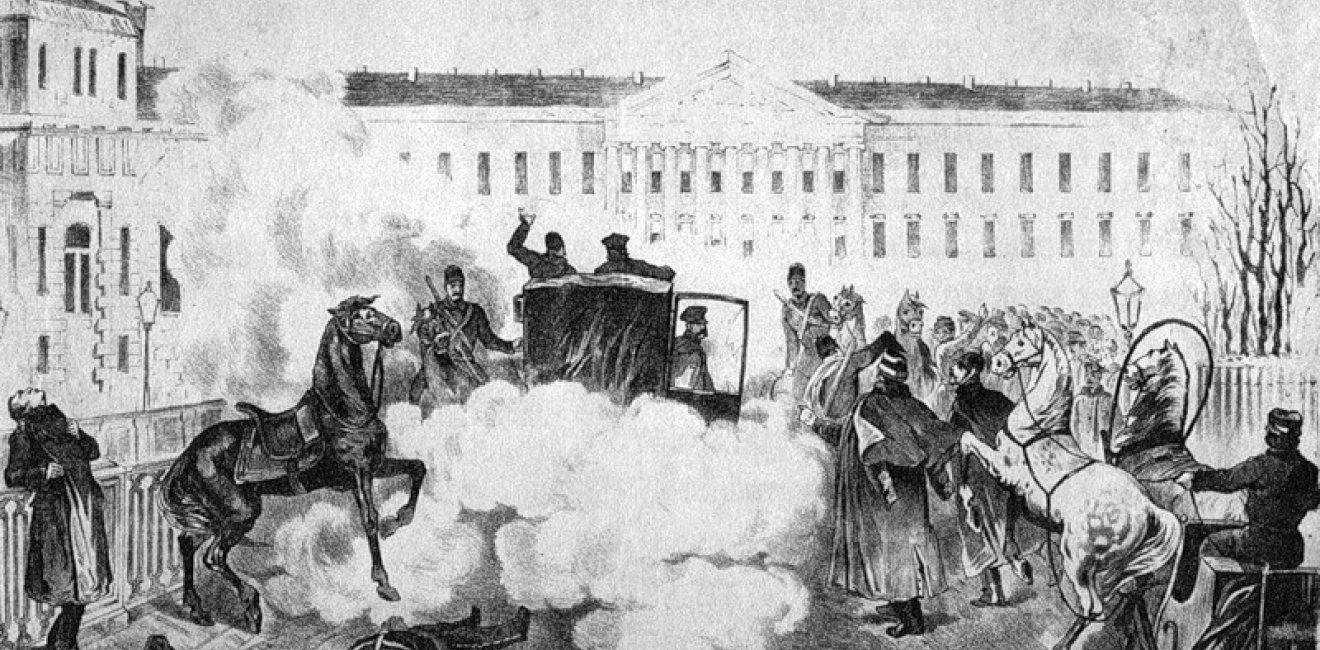
A blog of the Kennan Institute
Vladimir Putin now compares his place in history to that of Peter the Great. The comparison is apt, but not for the reasons Putin invokes. Peter defeated Sweden and proclaimed himself emperor. Yet he left much of what is now Ukraine to the Ottomans. Peter I left Russia defeated in the South, exhausted economically, with serfdom solidly ensconced in Russia’s social order.
Subsequent rulers eventually managed to regain the territory Peter could not defend (Catherine II), abolish serfdom (Alexander II in 1861), and unlock Russia’s economic potential (Sergei Witte under Alexander III and Nicholas II). None could remedy Peter’s most damaging legacy: leaving Russia devoid of a reliable succession process.
The Rurikid dynasty in Kyivan Rus was hardly a model of smooth power transfer. The martyrs Boris and Gleb were canonized for not fighting with their brother over the throne. The election of Mikhail Romanov in 1613, following the Time of Troubles, was supposed to fix the problem. It didn’t.
Peter sought to open Russia to Europe, believing he could acquire modern technology hardware without the accompanying social software. Building from the top down inevitably creates significant flaws. Peter paid foreign scientists to staff his Academy of Sciences, but it took another half-century to open Russia’s first university.
Peter’s effort to modernize Russia by personally shaving off the beards of his boyar elite, taxing everything in sight and building a new capital full of palaces for the nobility on the bones of tens of thousands of serfs undoubtedly appeals to Putin. So does Peter’s taking control of the Church and subjecting his courtiers to humiliation.
Despite vanquishing Charles XII at Poltava, Peter was less successful against the Ottoman Empire. Having captured Azov in 1695–96, Peter attempted to liberate the Balkans, but failed. Defeated by the Ottomans at the Prut River in 1611, Russia was forced to abandon Azov. The fleet Peter built on the Black Sea was denied access under his daughter Anna. Russia finally acquired the right bank of the Dnieper and Crimea under Catherine the Great.
Peter’s major victory, defeating Sweden, opened the window to Europe on the Baltic. Putin has slammed shut the window, door, and border to Europe with his war to regain Ukraine. Soviet era “Finlandization” has been replaced with intentions to join NATO.
Peter’s greatest failing was his inability to institutionalize the leadership succession. For the rest of the eighteenth century, the dominant path to the throne was a palace coup. Since Peter, the reign of every adult Russian or Soviet ruler who lasted more than fifteen months began or ended with a coup, an assassination, or a revolution.
Following Peter’s death in 1725, the military Guards installed his second wife, Catherine, as empress. When she died in 1727, Peter’s sickly grandson, the ten-year-old Peter II, became emperor. His death in 1730 created a constitutional crisis. Peter the Great’s daughter Anna was elected empress by the Supreme Privy Council. She immediately shredded the agreement two leading families had devised to constrain the ruler’s powers. Her coup involved less violence than most.
In 1740, Ivan VI became ruler for a brief time. A coup in 1741 brought Elizabeth to the throne for two decades. Her designated successor, Peter III, was removed and killed by the Guards in favor of his wife, a German princess who became Catherine the Great.
Catherine (ruled 1762–96) managed to incorporate much of Ukraine into the empire, but her rise to power could not institutionalize the succession process. Her son and heir, Paul, lasted five years before a palace coup brought his son, Alexander I, to the throne in 1801. His younger brother, Nicholas, ascended in 1825 in the face of a military revolt by the Decembrists, who were seeking to install his older brother, Constantine, as ruler.
Alexander II, the great reformer who emancipated the serfs, died from a bomb thrown by a revolutionary (1881), bringing his son, Alexander III, to the throne. Alexander’s son Nicholas II survived the 1905 Revolution but perished at the hands of the Bolsheviks.
Lenin’s death in 1924 set off an intense political struggle culminating in Stalin achieving essentially dictatorial power. He proceeded to purge two-thirds of the former Central Committee and three quarters of Politburo colleagues. Stalin’s death in 1953 was quickly followed by Beria’s removal and execution, Malenkov’s six months as apparent leader, and Khrushchev’s consolidation of power.
Khrushchev was removed in a coup (1964) that brought Brezhnev to the top of the Communist Party of the Soviet Union. After Brezhnev died in 1982, Andropov lasted fifteen months; Chernenko just over a year.
Gorbachev’s elevation (1985) brought generational change and perestroika. Boris Yeltsin’s election as president of the Russian Federation established a serious rival center of power. The August 1991 coup essentially ended Gorbachev’s hold on power.
That heralded the end. The Baltic states reclaimed their national identities. In Gorbachev’s March 1991 referendum, two-thirds of Ukrainians voted for some sort of union; in December, 90 percent voted for independence.
To protect his family, Yeltsin undermined his constitutional provisions by resigning before the end of his term, permitting Vladimir Putin to run for office as acting president.
Putin has de-institutionalized Russia’s political system even more thoroughly than Peter I did. It is unlikely that Russia’s next leader will come to power without a serious struggle. Chechnya’s Kadyrovtsy and Prigozhin’s Wagnerovtsy are candidates to play the role of Peter’s Guards regiments in the twenty-first century. The returning Wagnerovtsy may well resemble the Afghantsy after 1989.
Putin has been concerned about his place in history, discussing it with interlocutors as diverse as Alexander Dugin and Evgeniy Venediktov. In his “Lunch with the FT” (January 28–29, 2023), Venediktov recounted Putin in 2008 asking the former history teacher how he would be portrayed in history textbooks. Venediktov managed to mention some events from the previous eight years. Putin responded, “That’s all?”
At a meeting with editors after annexing Crimea in 2014, Putin asked Venediktov, ”What about now?” Venediktov was nonplussed, not immediately recalling the conversation from six years earlier. Putin reminded him: the textbooks.
Had Putin retired from politics at the end of his second term, he might be portrayed in textbooks as Vladimir the Lucky. When he became prime minister in 1999, oil was at $10–$12 per barrel. When he became prime minister again in 2008, it was at $147. That windfall should have made any president of Russia look successful.
In 2023 it seems more likely that Putin will appear in most history texts in one of two guises. A Vladimir the Voracious would focus on the massive corruption accompanying his rent distribution economy. Sergei Pugachev told Catherine Belton that in 2008, Putin diverted the entire $1 billion budgeted for renovating St. Petersburg’s port to build his palace near Sochi. In Putin’s first eight years, resource rents totaling $900 billion generated annual growth of about 7 percent. Over the next five years, some $1.3 trillion of hydrocarbon income brought growth of 1 to 1.5 percent.
More likely the massive destruction of civilian infrastructure in Ukraine will leave his legacy as Vladimir the Vindictive. We do not know how Putin’s rule will end. If apartment bombings that slaughtered innocent civilians and a war that leveled Chechnya’s capital city were key to his 1990 election, Putin may exit in a comparable way.
The opinions expressed in this article are those solely of the author and do not reflect the views of the Kennan Institute.
Author

Professor Emeritus, Georgetown University

Kennan Institute
After more than 50 years as a vital part of the Wilson Center legacy, the Kennan Institute has become an independent think tank. You can find the current website for the Kennan Institute at kennaninstitute.org. Please look for future announcements about partnership activities between the Wilson Center and the Kennan Institute at Wilson Center Press Room. The Kennan Institute is the premier US center for advanced research on Eurasia and the oldest and largest regional program at the Woodrow Wilson International Center for Scholars. The Kennan Institute is committed to improving American understanding of Russia, Ukraine, Central Asia, the South Caucasus, and the surrounding region through research and exchange. Read more

Explore More in The Russia File
Browse The Russia File
Chechnya as a Model of Modern Russia

Russia’s Indigenous Communities and the War in Ukraine

Gas and Power in a Changing US–Russia Relationship

